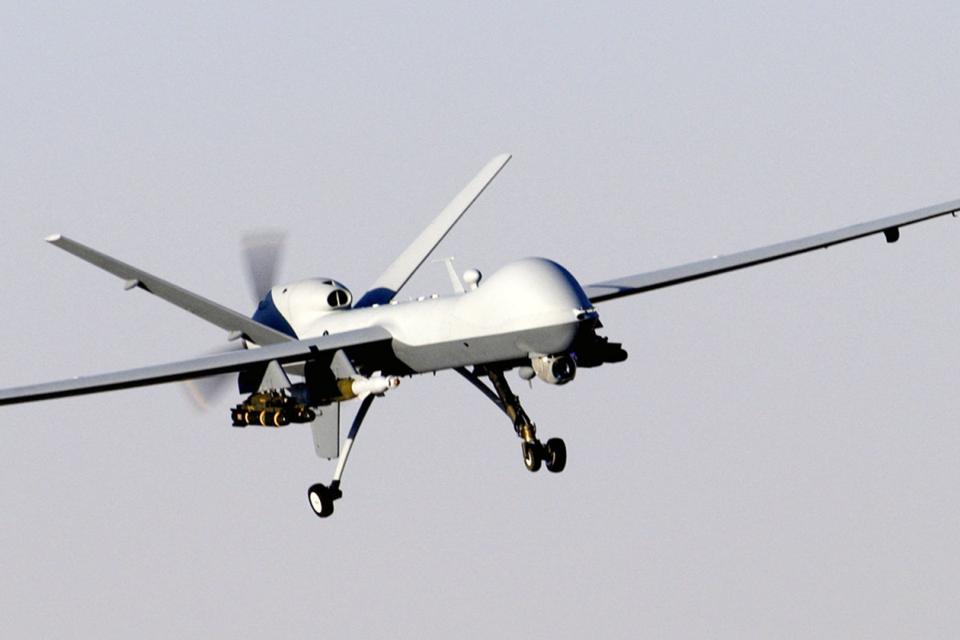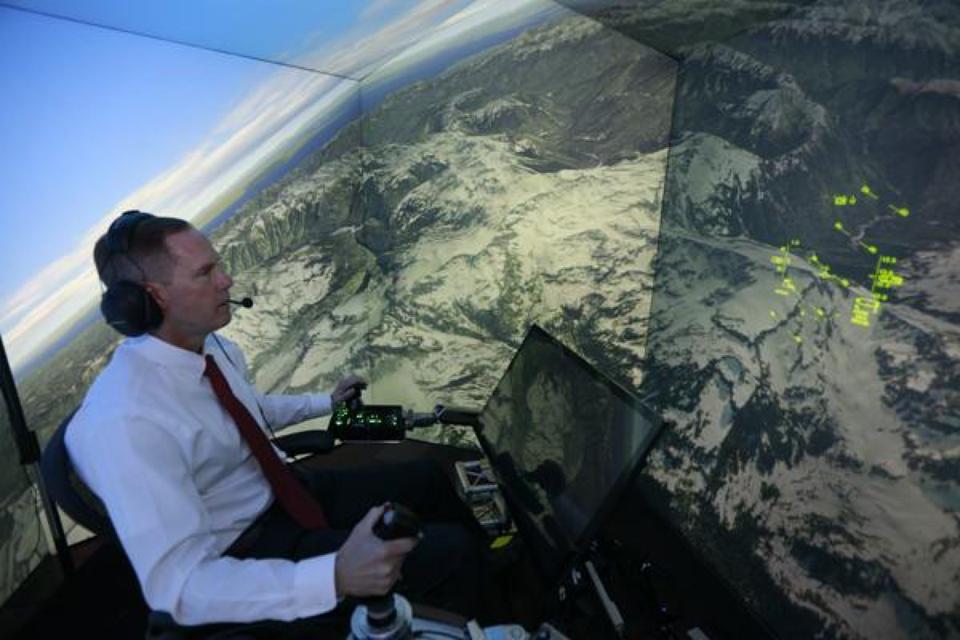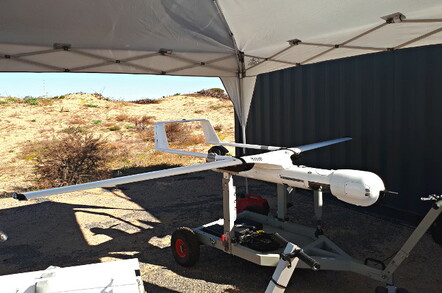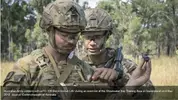Voi vain ajatella sotilas sovellusten kehitystä ja tasoa koska resurssit ovat aivan toista luokkaa.
Onko heillä tekijöitä? Totta kait Darpa vetää joitakin aivoja mutta ei tarpeeksi.
Follow along with the video below to see how to install our site as a web app on your home screen.
Note: This feature may not be available in some browsers.
Voi vain ajatella sotilas sovellusten kehitystä ja tasoa koska resurssit ovat aivan toista luokkaa.


Kyllä itse uskon. Lähes loputtomat resurssit auttavat paljon ja jenkeissä on paljon sikäläisen puolustuslaitoksen alihankkijoita. Lisäksi tavoite pysyä teknisesti edelläkävijänä.Onko heillä tekijöitä? Totta kait Darpa vetää joitakin aivoja mutta ei tarpeeksi.
https://www.cnet.com/news/boston-dynamics-spotmini-robot-dog-goes-on-sale-in-2019/SpotMini, Boston Dynamics' agile four-legged robot, will go on sale next year for companies that want a mechanical quadruped to get to places a wheeled device can't reach.
Boston Dynamics has 10 SpotMini prototypes now and will work with manufacturing partners to build 100 this year, company co-founder and President Marc Raibert said at a TechCrunch robotics conference Friday. "That's a prelude to getting into a higher rate of production" in anticipation of sales next year, he said.
Drones Can Defeat Humans Using Artificial Intelligence
JV Chamary ,
CONTRIBUTOR

MQ-9 Reaper military drone (Image: US Air Force / Staff Sergeant Brian Ferguson)
Researchers have developed an artificial intelligence that can defeat human pilots in combat. This new AI, known as ALPHA, is designed for military drones or 'unmanned aerial vehicles' (UAVs).
ALPHA was tested in simulations and the results have been published in the Journal of Defense Management. The first versions beat AI systems previously used by the US Air Force Research Lab. Advanced versions were then assessed in a flight simulator by retired Air Force Colonel Gene Lee, an expert in combat tactics.
After his first fight against ALPHA, Lee said, "It seemed to be aware of my intentions and reacting instantly to my changes in flight and my missile deployment. It knew how to defeat the shot I was taking. It moved instantly between defensive and offensive actions as needed."
According to Lee, most AI opponents can't keep-up with the pace and pressure of real combat-like scenarios, and can be beaten by experienced human pilots. But during simulated aerial engagements with ALPHA, Lee couldn't score a single kill and was repeatedly shot out of the air.
ALPHA has defeated a few other experts too, even when given handicaps in speed, turning, sensors and missiles. Colonel Lee, who has been testing systems since the early 1980s, says it's "the most aggressive, responsive, dynamic and credible AI I've seen to date."

Retired US Air Force Colonel Gene Lee in air combat against artificial intelligence system 'ALPHA' in a flight simulator (Image: Lisa Ventre / University of Cincinnati)
Recommended by Forbes
Is 'Game Of Thrones' Killing Your Sex Life?
Cincinnati Zoo Was Right To Kill Harambe The Gorilla
How Zika Virus Is Passed From Mother To Baby
Why Don't Mutants Evolve In X-Men: Apocalypse?
MOST POPULAR
Photos: The 10 Most Dangerous U.S. Cities
TRENDING ON FACEBOOK
Farewell Toys R Us, We Will Miss You
MOST POPULAR
Photos: The Toughest Jobs To Fill In 2017
MOST POPULAR
The Top 10 Richest Billionaires 2018
The AI is based on an algorithm created at the University of Cincinnati by aerospace engineers Kelly Cohen and Nick Ernest. ALPHA itself is being developed by the company Psibernetix. Ernest, now CEO of Psibertentix, says, "The goal is to continue developing ALPHA, to push and extend its capabilities, and perform additional testing against other trained pilots."
ALPHA can currently process sensor data and plan combat moves for four drones in less than a millisecond, or over 250 times faster than the eye can blink -- reaction times far beyond human abilities.
The AI isn't powered by a super computer -- it runs on an ordinary $500 desktop PC, which means high performance at low cost. This is achieved through efficient algorithms.
Although we usually expect machines to process all the available data before making decisions, ALPHA takes a more human approach to solving problems, simplifying variables to only consider the most relevant information -- to work out whether an opponent is better, for example.
Instead of using numbers for precise parameters, ALPHA's algorithms are based on language or 'fuzzy logic' -- it makes decisions via if-then rules. That reduces the number of branches in a decision-making tree, which lowers the computing power required to find the best strategy.
ALPHA is built on a so-called 'genetic algorithm' -- rules inspired by how genes are inherited from one generation to the next. Genetic algorithms are a type of 'evolutionary algorithm', mimicking the process of adaptation by natural selection (survival of the fittest). In this case, bits of computer code are 'bred' to create new combinations, with the most efficient versions chosen by the selection process.
Drones powered by artificial intelligence could evade attacks while continually adapting to enemy tactics. While a drone could be a wingman for manned aircraft, it could also be used to fight aerial battles without humans at all.
JV Chamary is an award-winning science journalist. Follow him on Twitter /Google / Facebook
https://www.forbes.com/sites/jvchamary/2016/06/28/ai-drone/#40ec61ac7081
No tuo tarkoittaa että simulaatiossa käytetyille ohjuksille ei annettu kunnon tekoälyä.Lee couldn't score a single kill and was repeatedly shot out of the air.
Ja tämä ongelma ei ole ainakaan vähenemässä. Laitteiden hinnat tulee alas joten käyttäjien määrä tulee kasvamaan ja roimasti.Lentäjät älähtävät droneista Helsinki-Vantaalla: "Vaaransivat matkustajakoneiden turvallisuuden"
Lentoaseman ilmatilassa tehtiin viime viikolla viisi havaintoa droneista lentokoneiden lähestymis- ja lähtölinjojen lähellä.
https://yle.fi/uutiset/3-10207665
Jotain rotia tähän touhuun pitäisi kyllä saada.
Toivottavasti ei tule ekaksi jotain isoa onnettomuutta ennen kuin roti saadaan.Ja tämä ongelma ei ole ainakaan vähenemässä. Laitteiden hinnat tulee alas joten käyttäjien määrä tulee kasvamaan ja roimasti.

http://www.theregister.co.uk/2018/05/18/insitu_scaneagle_3_first_public_demo/The Register was among the first news outlets to get a close-up look at Insitu's new Scaneagle 3 aerial surveillance drone during its first public demo at a naval test range in Spain.
The Scaneagle will be known to British readers as the successful unmanned aircraft used by the Royal Navy right up until the UK ran out of money to keep it in service, having signed a fixed-term Urgent Operational Requirement contract.
At Insitu's Onward event at the CEDEA test range near Mazagón, on the Andalusian coast, El Reg had a shufti at the second Scaneagle 3 prototype, which was on its third demo flight – the two previous were restricted to potential customers only.
Compared to the previous model, the Scaneagle 3 carries up to 20lb (9kg) of sensor gear rather than 7.5lbs, as a company engineer told us. This means it can carry two separate payloads, as Insitu describes the electro-optical sensor packages that can be fitted to the aircraft.
The firm was also keen to stress that the Scaneagle 3 is ITAR-free, meaning it can be sold to commercial customers without needing to go through the painful process of obtaining a US military tech export licence. Previous versions were not ITAR-free, though as they were primarily acquired by military users that was less of a concern.
The airframe weighs in at 80lb (36kg) fully loaded, with the rear-mounted pusher engine generating 170W of electrical power for the sensors and radios, including an encrypted video downlink.
Olisikohan UAV factoryn Penguin B lähimpänä siviilimarkkinoilla olevista?
http://www.theregister.co.uk/2018/05/18/insitu_scaneagle_3_first_public_demo/
Mitenköhän paljon tämä maksaa siviilimarkkinoilla? onko 30k liian paljon?
 Sen hinnaksi on ilmoitettu 50,000 dollaria.
Sen hinnaksi on ilmoitettu 50,000 dollaria.En oikein kyllä tajua miksi robottien pitäisi osata kävellä? Kyllä se pyörällä kulkeva robotti pääsee jokapaikkaan jos vain on niveliä tarpeeksi ja enemmän kuin 4 pyörää jotta alusta sopeutuu epätasaisuuksiin.
http://www.theregister.co.uk/2018/05/22/military_brainboxes_ponder_uk_needs_you_list_of_ai_boffins/The Ministry of Defence wants to compile a list of AI boffins with UK security clearance that can be hired to help build Britain's inevitable robotic military future.
The ministry's latest publication on artificial intelligence and the armed forces, titled Human-Machine Teaming sets out its vision for what the Rise of the Machines could look like in practice.
While it ruled out weaponised AI, if only because of perceived problems with agreeing "a common definition" for lethal autonomous weapon systems*, the "concept note" did set out the MoD's view of how Britain is falling behind in the race to militarise self-thinking robots.
"The impact is a shift in the relative rates of innovation from defence to commercial firms with the best systems already, and remaining, in the civilian sector. Military access to the best technologies will become a challenge, except in national crisis situations," wailed the note's authors, who hail from the MoD's Development, Concepts and Doctrine Centre at Shrivenham, the Wiltshire location where the armed forces' future strategic thinkers are hothoused.
https://spectrum.ieee.org/automaton...tem-stops-propellers-before-you-lose-a-fingerQuadrotors have a reputation for being both fun and expensive, but it’s not usually obvious how dangerous they can be. While it’s pretty clear from the get-go that it’s in everyone’s best interest to avoid the spinny bits whenever possible, quadrotor safety primarily involves doing little more than trying your level best not to run into people. Not running into people with your drone is generally good advice, but the problems tend to happen when for whatever reason the drone escapes from your control. Maybe it’s your fault, maybe it’s the drone’s fault, but either way, those spinny bits can cause serious damage.
Safety-conscious quadrotor pilots have few options for making their drones safer, and none of them are all that great, due either to mediocre effectiveness or significant cost and performance tradeoffs. Now researchers at the University of Queensland in Brisbane, Australia, have come up with a clever idea for a quadrotor-safety system that manages to be highly effective, reliable, lightweight, and cheap all at the same time. If that sounds too good to be true, we have video of some hot dogs not getting chopped into bits that might convince you otherwise.
https://hackaday.com/2018/05/27/watch-dogs-inspired-hacking-drone-takes-flight/They say that life imitates art, which in modern parlance basically means if you see something cool in a video game, movie or TV show, you might be inclined to try and build your own version. Naturally, such things generally come in the form of simple props, perhaps with the occasional embedded LED or noise making circuit. It’s not as if you can really build a phaser from Star Trek or a phone booth that’s bigger on the inside.
But after seeing the hacking quadcopter featured in the video game Watch Dogs 2, [Glytch] was inspired to start work on a real-world version. It doesn’t look much like the drone from the game, but that was never the point. The idea was to see how practical a small flying penetration testing platform is with current technology, and judging by the final build, we’d say he got his answer.
All the flight electronics are off the shelf quadcopter gear. It’s running on a Betaflight OMNIBUS F4 Pro V2 Flight controller with an M8N GPS mounted in the front and controlling the 2006 2400KV motors with a DYS F20A ESC. Interestingly [Glytch] is experimenting with using LG HG2 lithium-ion cells to power the quad rather than the more traditional lithium-polymer pack, though he does mention there are some issues with the voltage curve between the two battery technologies.

